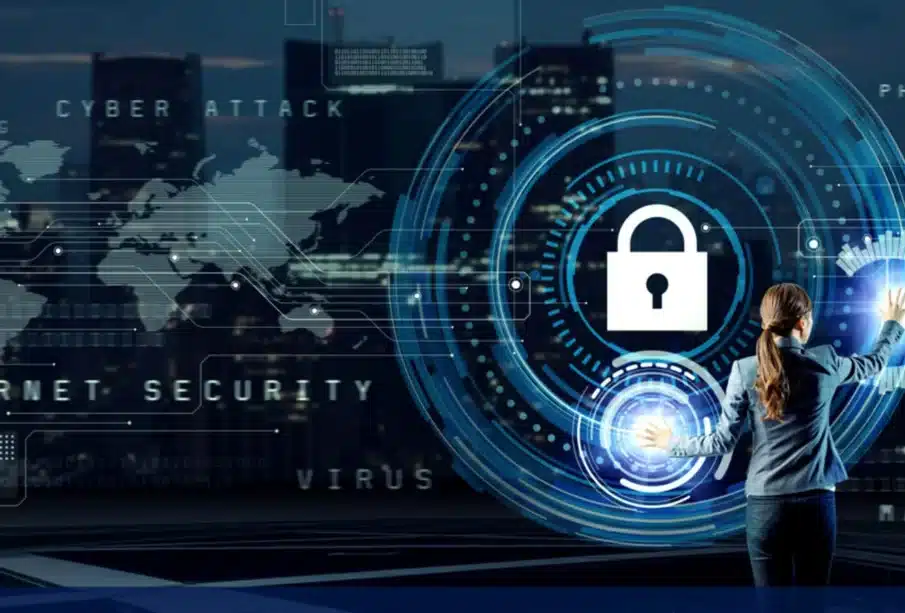The Evolving Threat Landscape: Latest Cybersecurity Trends

Cybersecurity dangers in today’s internet-connected society are dynamic and always evolving. Cybercriminals’ strategies and methods are always evolving in response to new technological developments. Organizations and people must be informed of current cybersecurity trends to safeguard sensitive data and remain one step ahead of these attacks. The cybersecurity threat landscape is continuously changing, and this article will discuss a few main factors that are influencing this change.
Ransomware-As-A-Service (Raas) Takes Center Stage
Ransomware attacks have been on the rise in recent years, and one significant trend is the emergence of Ransomware-as-a-Service (RaaS). Cybercriminals with less technical knowledge can quickly launch ransomware assaults via RaaS. They can rent or purchase ransomware kits, which come with step-by-step instructions, making them accessible to a wider range of malicious actors. This trend has resulted in a surge of ransomware attacks targeting organizations of all sizes, making it essential for businesses to enhance their security measures.
AI And Machine Learning In Cyberattacks
Machine learning and artificial intelligence have given both cybersecurity defenses and hackers a leg up. Hackers are using AI and ML to automate tasks, such as identifying vulnerabilities and crafting more sophisticated attacks. Malware driven by AI can change and adapt, making it more difficult to identify. As a result, organizations must deploy AI and ML in their cybersecurity strategies, including those available at https://cisoshare.com, to identify and respond to threats more effectively.
Supply Chain Attacks And Third-Party Risks
Supply chain attacks have gained prominence as attacker target vulnerabilities within an organization’s supply chain to gain access to their primary target. These attacks can be devastating, as they compromise trusted relationships and often go undetected for extended periods. Organizations are increasingly focusing on securing their supply chains and assessing the cybersecurity posture of third-party vendors and partners to mitigate these risks.
IoT Vulnerabilities
The Internet of Things (IoT) keeps developing and expanding, connecting various devices to the Internet. While this connectivity offers convenience and efficiency, it also presents new cybersecurity challenges. Many IoT devices lack adequate security features, making them easy targets for cybercriminals. The growing quantity of IoT devices increases the potential attack surface. Organizations need to implement robust IoT security strategies to protect against potential threats.
Zero Trust Security Model
One proactive strategy for cyber defense is the Zero Trust concept, which is quickly becoming the de facto standard. In its default state, it presumes that no entity—inside or outside the network—can be trusted. Instead, it enforces strict access controls, continuous monitoring, and verification of users and devices. This approach helps organizations minimize the risk of insider threats and limit lateral movement by attackers within their networks.
Regulatory Changes And Compliance Challenges
To handle new threats and vulnerabilities, cybersecurity laws and compliance standards are always changing. Data management and security procedures are subject to stringent regulations under the General Data Protection Regulation (GDPR) of the European Union, the California Consumer Privacy Act (CCPA), and other data protection legislation. To prevent costly fines and harm to their reputation, organizations need to be aware of these requirements and make sure that they are following them.
Cybersecurity Skills Shortage
There are very few qualified cybersecurity specialists due to the threat landscape’s increasing complexity. It is difficult for organizations to acquire and keep skilled specialists who can adequately protect their digital assets. To tackle this issue, companies are allocating resources towards employee training and development initiatives, contracting out cybersecurity tasks, and utilizing automation to reduce the effort required of security teams.
Conclusion
Staying informed of the latest cybersecurity trends for both individuals and businesses is vital as the cyber threat environment continues to change. Ransomware-as-a-service, AI-driven attacks, supply chain vulnerabilities, IoT risks, the Zero Trust model, regulatory changes, and the skills shortage are all factors shaping the current state of cybersecurity. To reduce these threats, companies must invest in cutting-edge technologies and prioritize employee training. They should also adopt proactive cybersecurity policies. We can protect our digital assets by staying vigilant and flexible.










